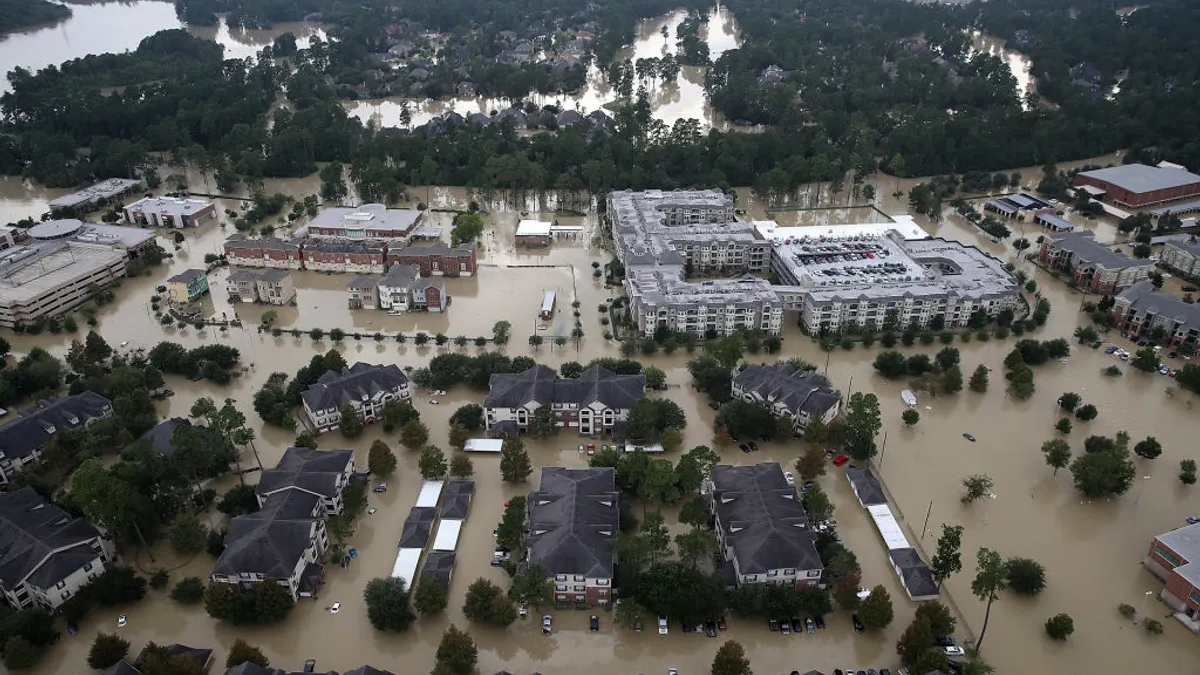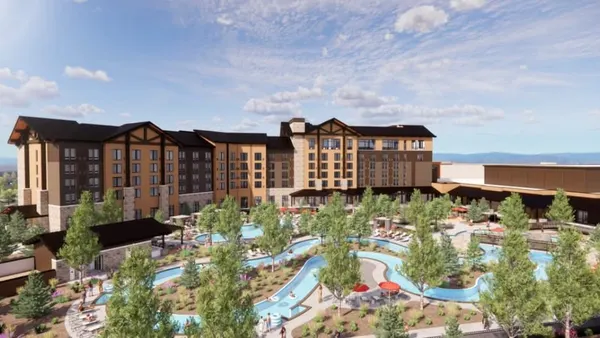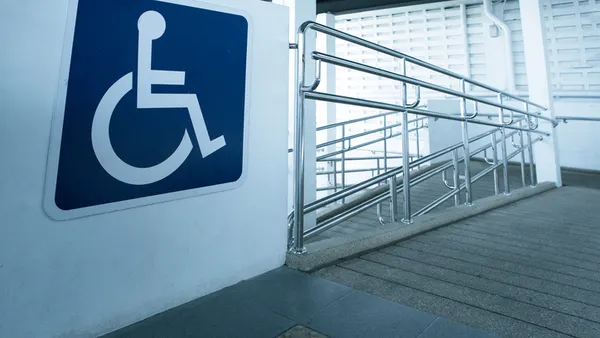Editor's note: This article is part of Construction Dive's 50 States of Construction series, in which we talk with industry leaders across the U.S. about the business conditions in their market.
Cleveland rocks. And where construction is concerned, so do Columbus and Cincinnati. That's according to Don Taylor, president and CEO of Akron, OH–based Welty Building Company, who says demand is strong in major markets across the state. Founded in Akron in 1945, the firm builds civic, educational, healthcare, corporate, sports and other projects in Ohio — most recently leading construction of the new Pro Football Hall of Fame Village, in Canton.
As business booms, however, a shortage of skilled labor is pushing Welty and other contractors statewide to take a more active role in recruiting new workers into the industry.
Construction Dive spoke with Taylor about where in Ohio construction is thriving, the emerging role of the developer there and how the company is helping alleviate the shortage of skilled labor in the state.
This interview has been edited and condensed.
Where in Ohio are you seeing the strongest activity?
TAYLOR: Northeast Ohio is where we're seeing the most success, but I think Columbus is a much stronger market. Columbus, being the state capitol, has had tremendous growth in recent years. It is now a very progressive city. What's really booming in Columbus are lifestyle projects, specifically retail and multifamily housing in mixed-use developments.
What's driving that growth?
TAYLOR: It's a combination of Ohio State University being located there, the city being the state capital, and there being a lot of banks and insurance companies. There are a lot of technology and white-collar jobs in the market. A lot of older neighborhoods have successfully made the transition as really cool places to be [with restaurants and retail]. The Cincinnati market is also very hot, and it's seeing the same kinds of transitions as Columbus.
What's the biggest challenge you face building in Ohio today?
TAYLOR: We are on the first wave of what the rest of the country has been dealing with for a while, and that is a shortage of skilled labor. It's not to the point where we're not meeting schedules or are having quality issues, but we are having to manage and strategize around how many craftsmen our subcontractors have. We've started splitting packages among multiple contractors if we think the labor-force requirements will be too big for one company.
Is Welty doing anything, specifically, to bring more workers into the industry?
TAYLOR: We're working with Akron Public Schools on a program for career-ready education. Not everyone in high school is college-bound or even should be going to college. I know that's hard for parents to swallow. A lot of those kids would make excellent tradespeople. We're working with the schools to start in the 9th grade promoting the construction trades as a viable [post-graduation] option and, in some cases, teaching math and science in a way that applies specifically to the trades. They'd be doing algebra, for example, relative to what would apply to a construction math problem so they can see exactly how it works.
We're also partnering with the city of Canton to sponsor 15 students or recent graduates as operating engineer apprentices in Richfield, OH. They'll come out of the three-week program with a 30-hour OSHA instruction card and a CDL, and understand what happens on job sites and be able to fit in. They will then be placed into a pre-apprenticeship program with an excavator or a company that uses operators and have the chance to become an apprentice. We're in discussions with other trades to do the same thing.
What's the long-term outlook for labor in the state?
TAYLOR: Splitting up project packages is a short-term fix. I see us having a four-to-10-year challenge around the labor supply. When we look at the age of our workforce and the rate they are retiring versus coming in, we've got to fill the gap. We masked some of this with technology for a while, and we are attempting to get more out of the people that are working, but it's catching up to us.
What else is impacting construction in Ohio?
TAYLOR: We're working more with developers. We went from being pretty institutional or very dependent on entrepreneurs to having a developer involved in at least 50% of our work. That could be through a public-private partnership or through a hospital project where the developer leases the building back to the hospital. Even though our client is ultimately very traditional, there's a developer in the mix. That requires us to have a strategy around helping them get financing and then managing the unpredictability of when that financing is going to close versus taking advantage of windows of opportunity for building.
There are lot of layers of complexity involved in helping a developer make a project successful. If it's an institution, they've got the money, they write the check and you're off to the races.
Are you seeing more P3s in the state?
TAYLOR: Yes, and that will be more of what needs to happen. We're involved in a couple now. At least once a week, maybe twice a week, I'm on the phone talking to somebody to educate them about how P3s work.
Ohio is not a “right to work” state but recent legislation wants to change that. What would the impact of that change have on construction?
TAYLOR: I'm torn on that. We benefit from the union relationships, and having a ready-trained labor pool is very beneficial. I think some of the labor rules out there impede productivity. They're trying to protect their trade [with those rules] but that makes things more expensive, so it's costing the customer. I see both sides of it.
Are there any other rules or regulations impacting your business?
TAYLOR: I don't see a whole lot of rules getting in the way. We've had very productive conversations with the legislature on making sure we keep the red tape out of the workforce. I think we've done pretty well.
One big project Welty is working on is the new Village at the Pro Football Hall of Fame. How is that project going?
TAYLOR: We've completed about 15% of the work so far. We just finished phase two of the stadium, and we've broken ground on the hotel. We're getting ready to start on three or four other projects in the next quarter. There's a lot of preconstruction activity going on.
The first game was played on the field earlier this month. How was that?
TAYLOR: It went way better than it did last year — they actually played. We're still trying to figure out who's responsible for what took place there last year. We're confident it's not us, but we don't want to point fingers.
That project is in a residential neighborhood. What impact is that having on construction?
TAYLOR: We're working [as much as] 22 hours a day, so making sure we aren't agitating the neighbors while still having to focus on getting the work done [is a challenge]. We've had a lot of truck traffic to the site, so going through the training and making sure our drivers and delivery people are aware that this is a residential area is important. The construction activity has attracted the interest of kids in the neighborhood [who come by to watch] and who may not be aware of the danger. We've had to be extra vigilant about safety.
What do you think sets Ohio and its construction industry apart from other states?
TAYLOR: Having worked in half a dozen other states recently, I think the quality and the craftsmanship in Ohio is bar none. I have not been in another state that has the craftsmanship that we have here.













